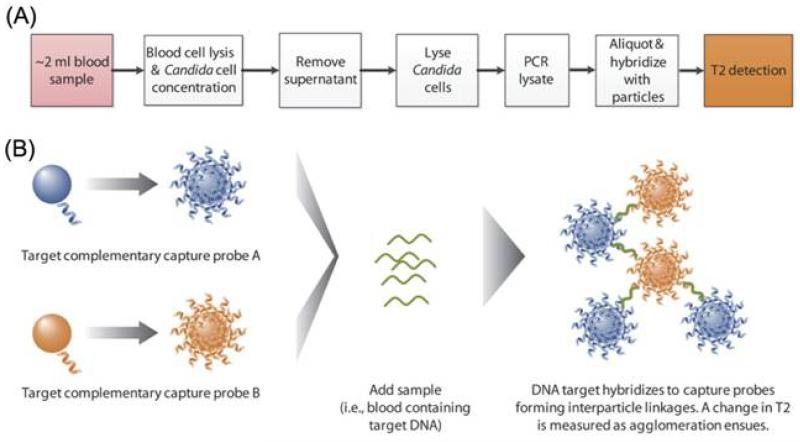Figure 2.
(A) Assay workflow for detection of Candida with T2MR. (B) Schematic depicting the T2MR detection particle reagent. Oligonucleotide probes are covalently conjugated to SPIONs. For each target, two populations of nanoparticles were generated, each bearing a distinct target-complementary probe. Upon hybridization to the target strand amplified in excess by asymmetric PCR, these nanoparticles cluster, leading to a change of the sample’s T2MR signal. The extent of clustering increases with the target DNA concentration. Reprinted with permission from [19]. Copyright 2013, American Association for the Advancement of Science.

